Early March has arrived and I popped over to Diana Ross’ house around the corner from us again to see her garden at the start of the year. A perfect still, sunny day on this the first week of spring proper.
Walking away I was toying with a few thoughts and I realise I’ve been hit by what happened.
Diana’s garden is an interesting place. And I mean interesting in the very real use of the word when something genuinely grabs your curiosity. It’s in central London, large by most city garden standards but still a small urban garden.
Yet I understand on this visit – now I’ve seen the front cover to the garden’s conclusion – what a rare thing Diana’s garden is.
Walking away to catch the train to my allotment, I thought how not all Sissinghurts and Great Dixters have to be vast estates surrounded by views into the countryside. Sometimes, they are the reverse, with the surrounding swaddle of a metropolis creating an inward facing area of privacy.
As I’m wont to do, I overthink things, and almost all non-gardeners will laugh but it has an air of magic about it. Sometimes a garden overtakes what we started and becomes something entirely of itself.
When I previously saw Diana’s garden, in late summer and autumn, it was overflowing with grasses, shoulder high shrubs and vibrant bold flowers.
In spring everything is lower, cut back. Sun pours in through the bare tree branches cutting low through luminescent green shards of emerging leaves. Perhaps it was the time of year but I was reminded of my trip to Rousham in 2016.
Toward the back of the garden is a shaded area which drew me in on previous visits for the ferns and shade loving plants (I’ve always loved woodland plants, in the wild or planted – the life of our woodland dwelling ancestors lives on in me).
In spring it’s the finest display of Hellebores I’ve seen. In fact, the Hellebores are all over the garden. Complemented by an occasional appearance of Daffodils, emerging shoots and the unfurling fronds of my favourite fern, the Maidenhair. Which, as Diana so accurately described, look like an army of little Triffids.
Overall the garden is (Diana will disagree with me, but it doesn’t matter because on this occasion I’m right 😉 ) as perfect in spring as it was in summer and autumn. Mature crimson Camellias really steal the spotlight, with Clematis, drifts of small Daffodils, Crocus and tiny species Tulips. Plus the new growth on clumps of Eurybia divaricata which were given to Diana by Dan Pearson.
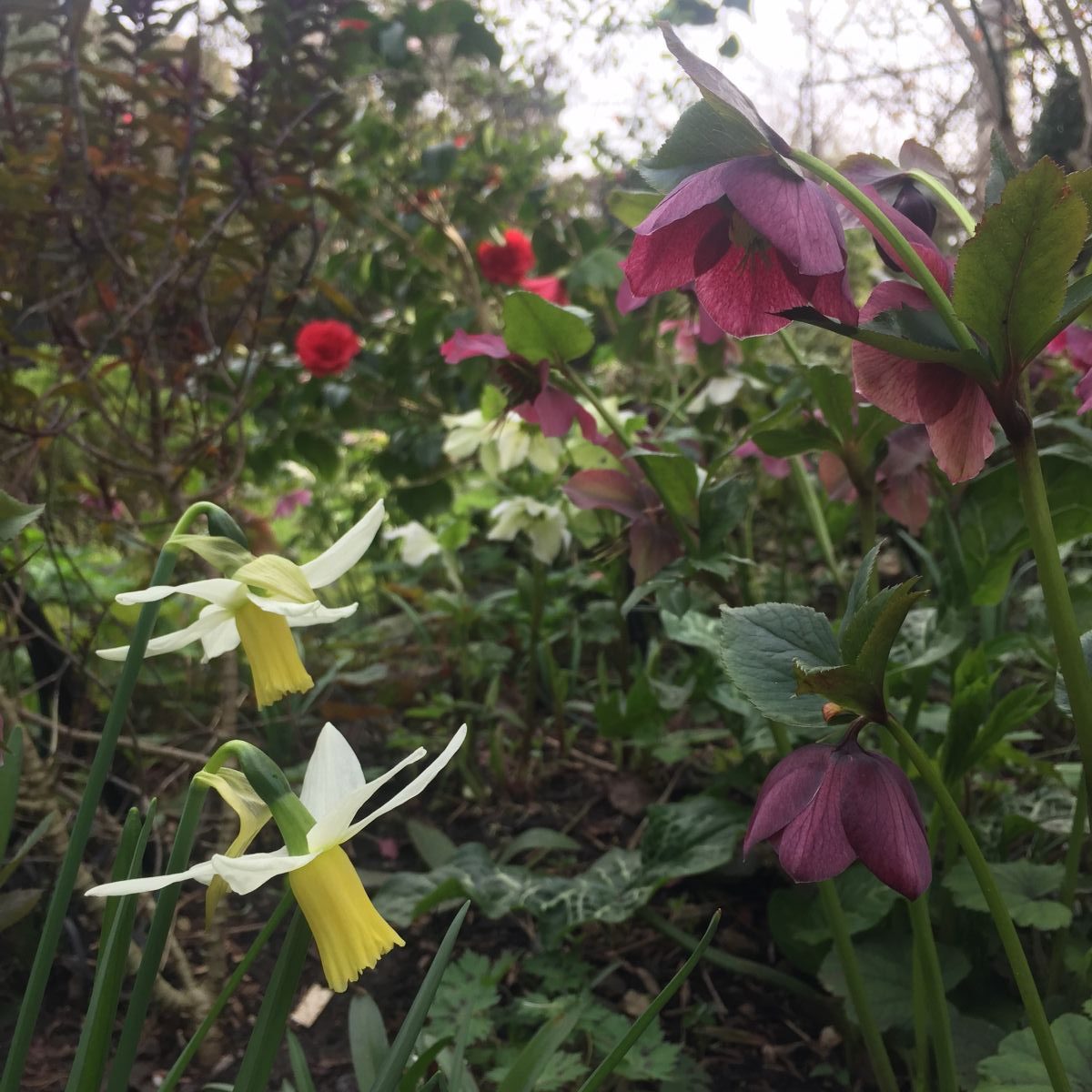
One of my observations of the garden is the way so many plants hustle and bustle together, often growing through one another. In summer, Calamagrostis brachytricha (from Beth Chatto) grow through Melianthus major. Bamboo growing through Euonymus. An effect I really like.
Diana explained that some of this is not planned, as she allows plants to grow where they wish, then keeping the best accidents. Over the years she has seen that actually, the plants seem to want to grow where others already are.
Nature does as nature wants.
As I was about to leave, while discussing huge clumps of Nerine bulbs in pots, I turned to see the above view. I can’t remember why but we stepped back through and to my left was another view. Looking toward the pond area, across a lawn flanked by formal hedges, the lush rich evergreen growth around the pond was framed by bright yellow dwarf Daffodils. It’s a perfect view.
I’m learning more about Diana’s garden and her original designed plan with formal garden rooms. Which themselves have remained, but have been overtaken by a love for more natural planting and happy accidents. The combination is something that creates that feeling of intrigue, telling a story of a garden that has been well loved for a long time.
That story and personal adventure is why the garden is so interesting and why it’s so unique. Only the combination of time, people and plants can create such a place and what I felt on my way to my allotment was something of surprise, that such a place exists not miles away by car but right here, under my nose in Clapham.
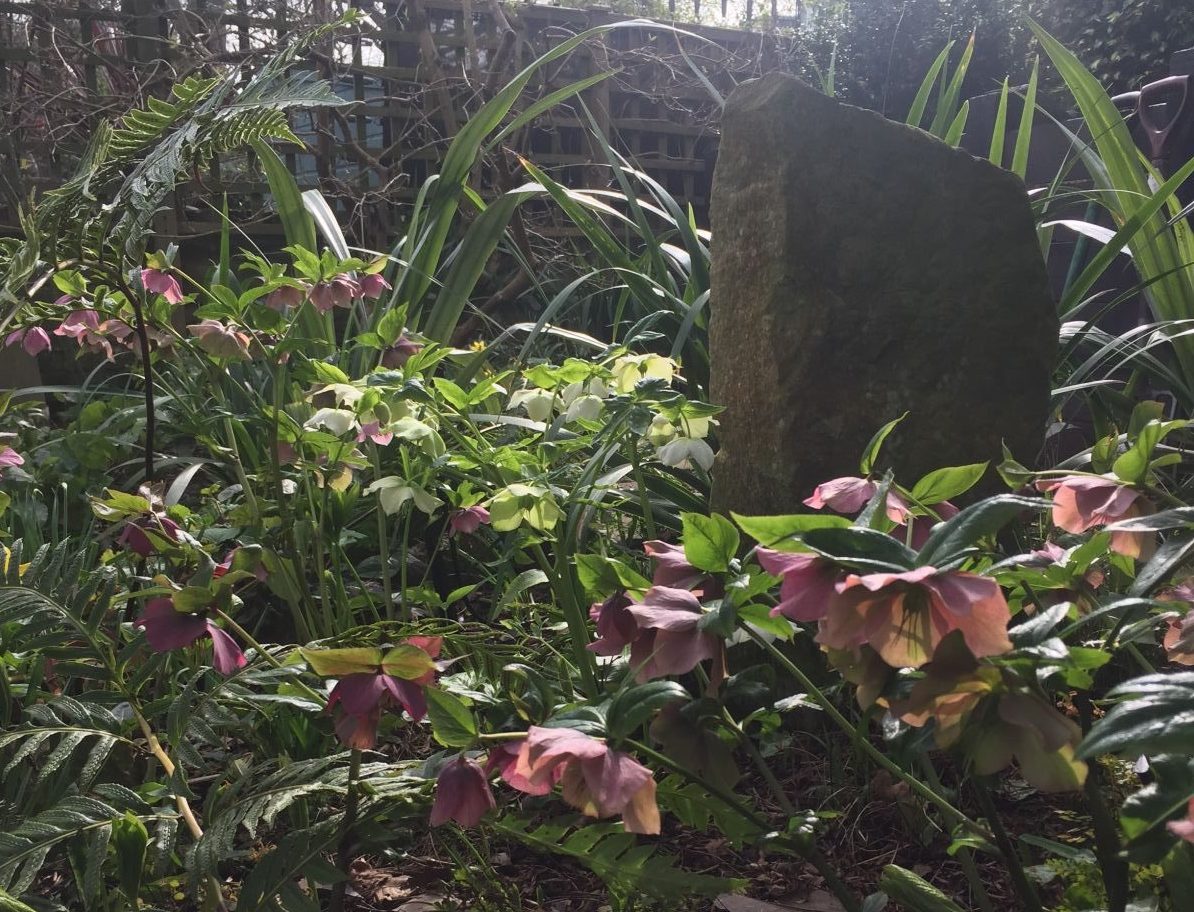
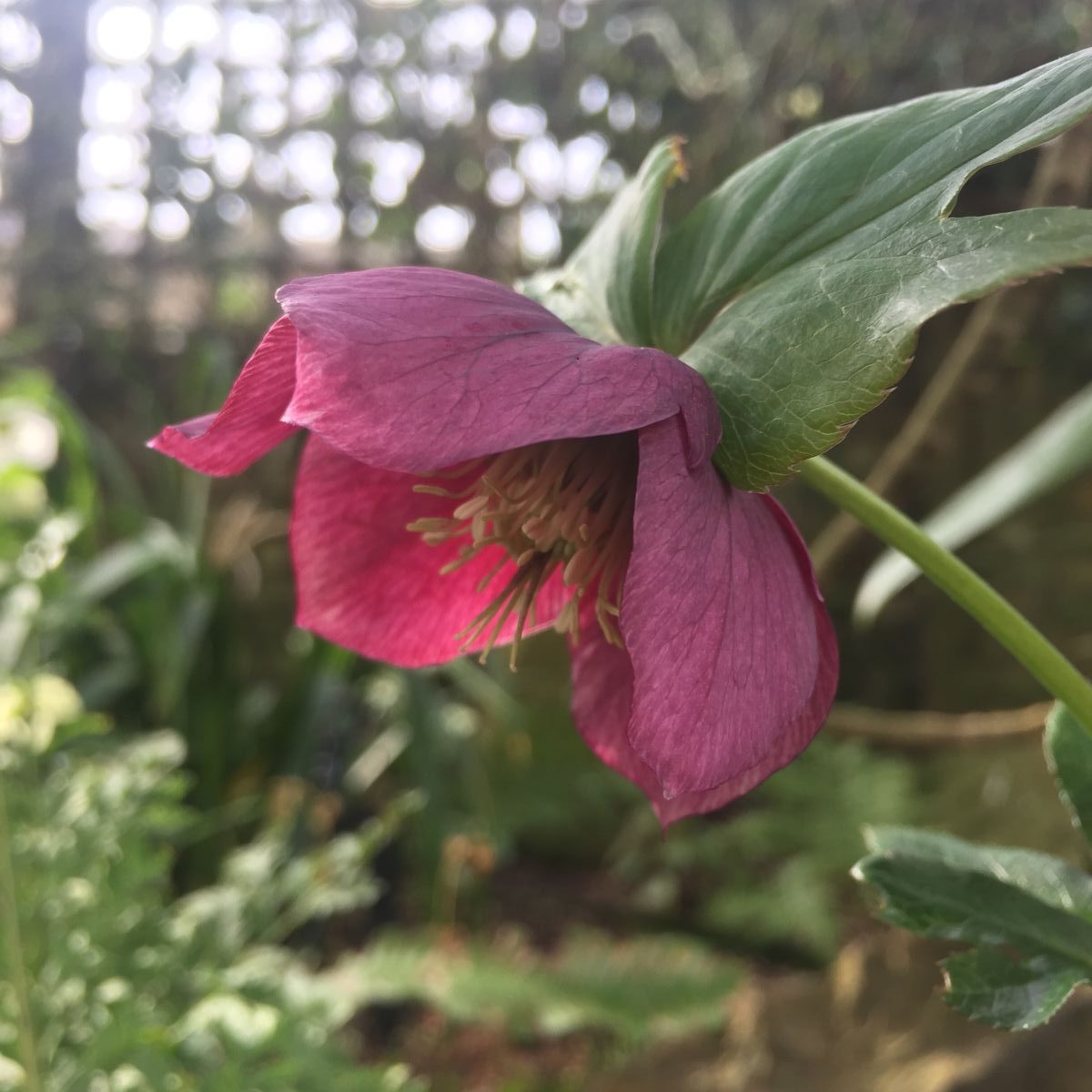
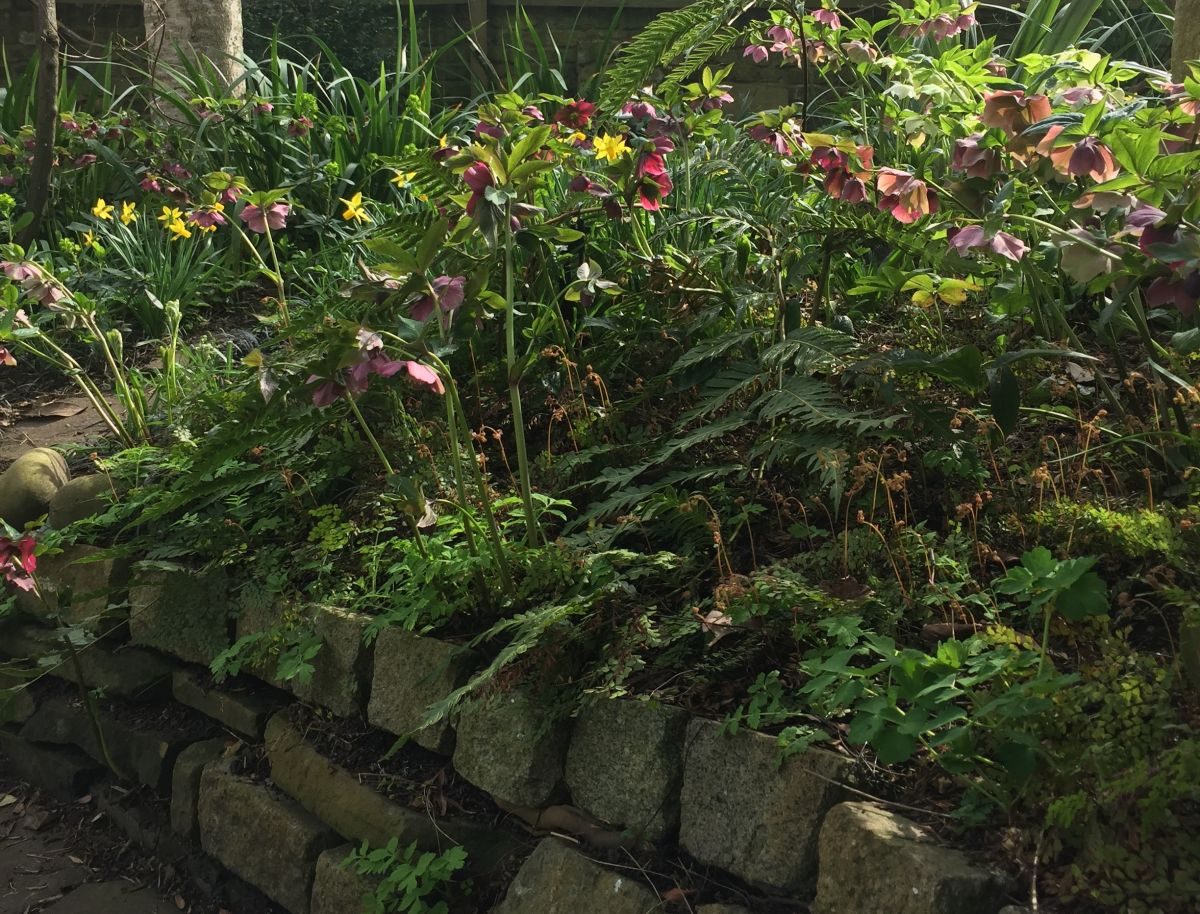
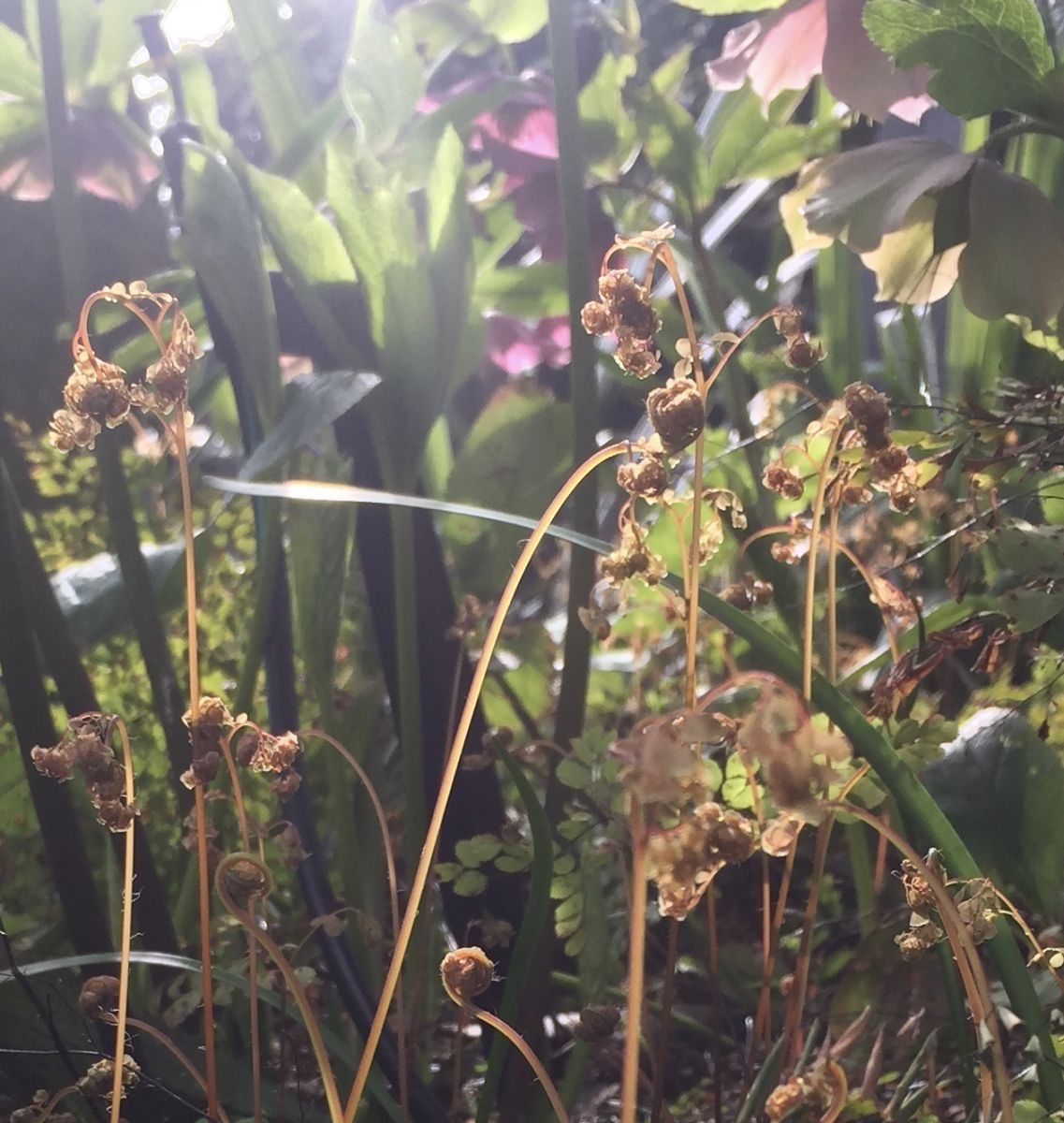
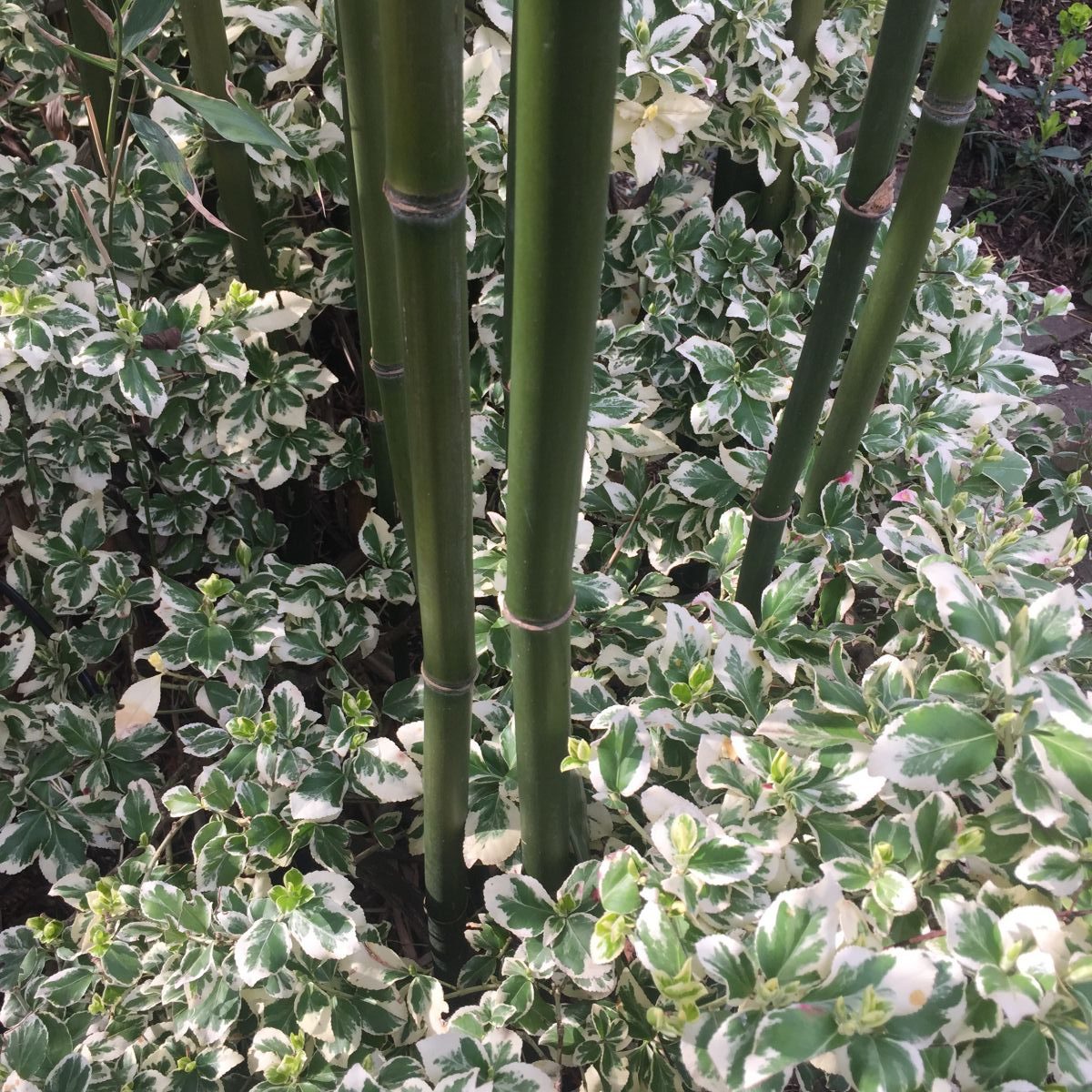
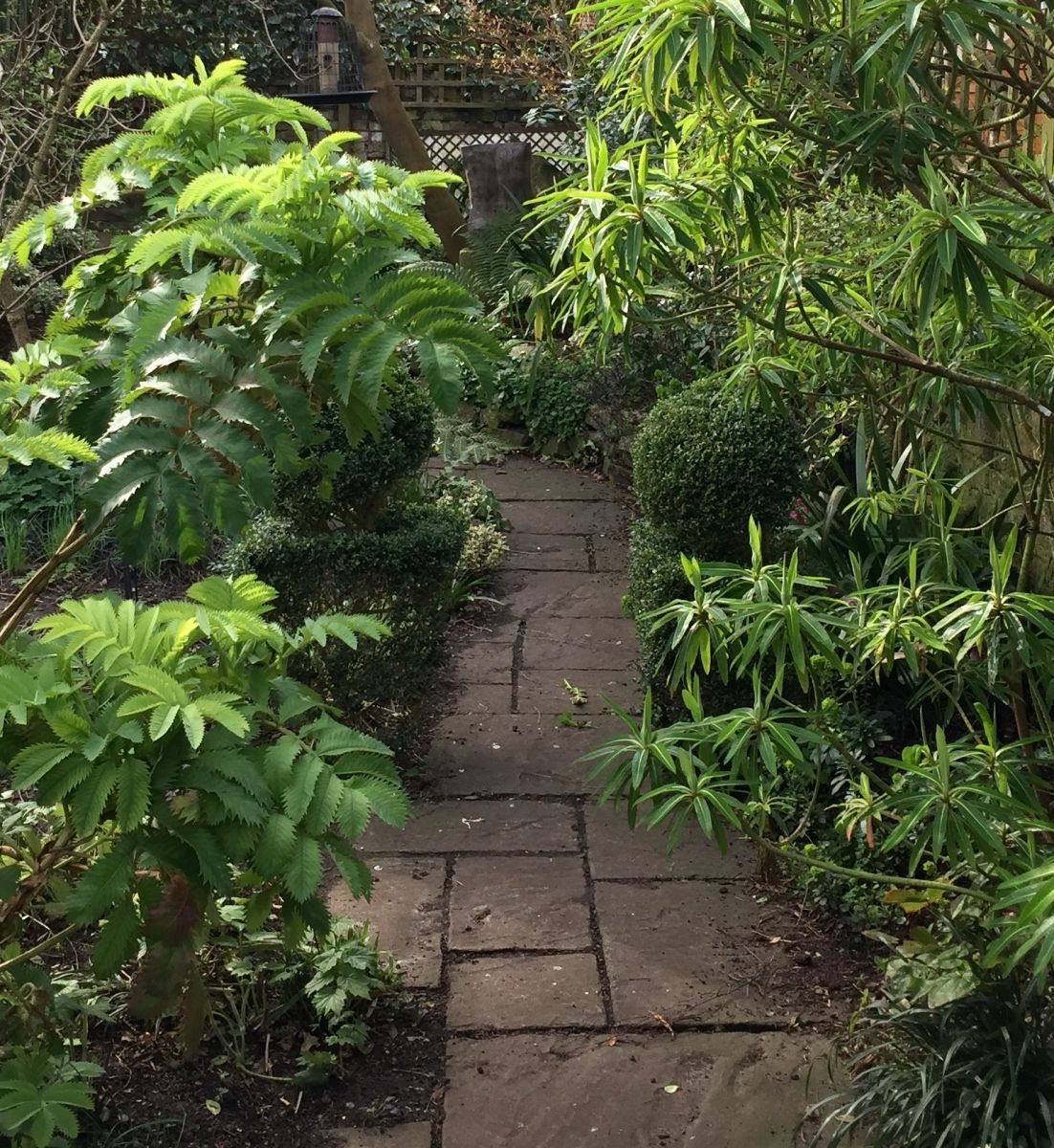
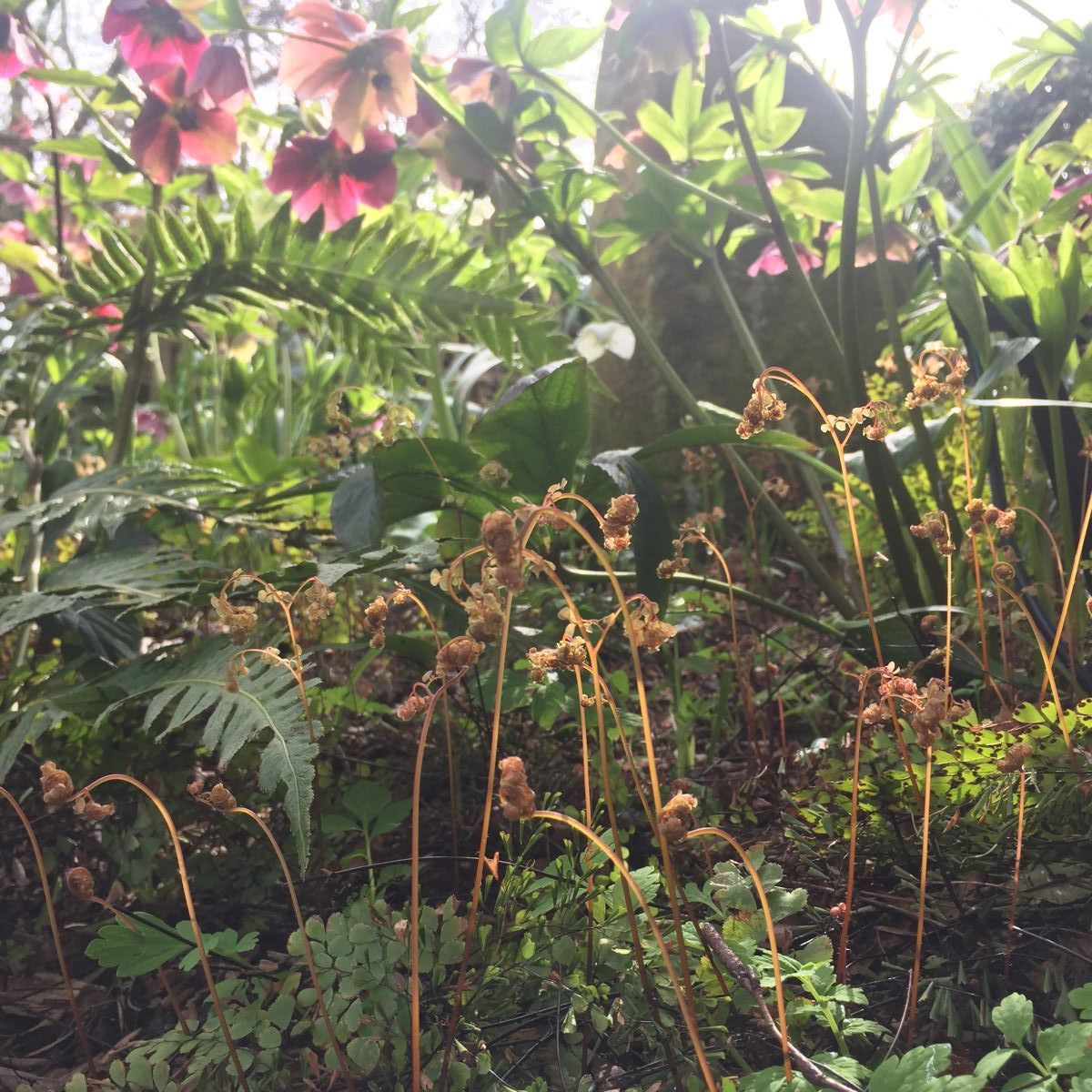
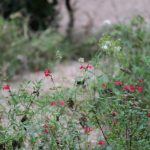
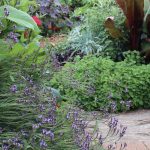
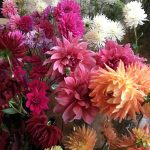
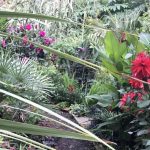
I’ve never seen her garden in Spring. I’m in london this afternoon so I’m going to call and see if I can go round. Thanks for the inspiration, Jack
Hope you can Sue, it looks wonderful and it’s interesting to see all of the later plants starting to come through now.
Yes, I totally agree, the bamboo growing through the variegated Euonymus is quite stylish.